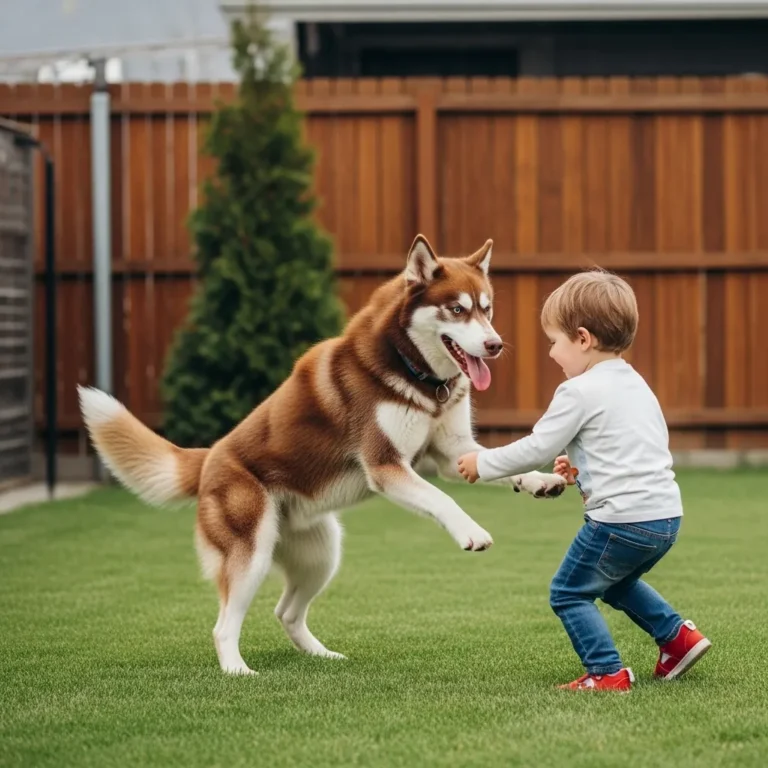
Author: DogsBlogSS Team
⚠️ Disclaimer: This article is for informational purposes only and is not a substitute for consulting a veterinarian.
american foxhound
There’s something irresistible about the American Foxhound—a dog with the elegance of a classic hunting breed and the charm of a loyal family companion. They carry history in their bones; after all, this breed traces back to the early days of America, when they ran alongside horsemen, following scents across miles of open land. Yet today, they’re just as likely to be found curled up on a couch after a long day of play.
But here’s the truth most new dog owners don’t realize: the American Foxhound is not a dog for everyone. They’re athletic, vocal, independent thinkers, and as scent-driven as any hound you’ll ever meet. If you’re considering welcoming one into your home, you’ll need a clear picture of their temperament, lifestyle needs, and health profile.
This guide walks you through everything—from what they’re really like at home to how much exercise they truly need. Whether you’re trying to decide if this breed fits your family or you’re already smitten and looking for deeper insight, this article has you covered.
Temperament & Compatibility (Is this the right breed for you?)
The American Foxhound is known for a sweet, docile, and gentle nature—but also for an independent streak influenced by generations of working as a hunting dog. Their personalities are warm and affectionate once they bond with their humans, but they are not velcro dogs. Instead, they’re happiest in a home where they’re treated like a companion but also given room to be what they naturally are: energetic scent hounds who love adventure.
Because of their polite and mild temperament, American Foxhounds can make loving family pets—especially in households that appreciate active dogs. According to PetMD, this breed is known for being friendly, tolerant, and often excellent with children thanks to their patient nature. Many families describe them as “big-hearted softies” indoors but tireless explorers outdoors.
Around Children
People often assume large hunting dogs might be too rough for kids, but the American Foxhound is surprisingly gentle. Their even temperament and natural calmness make them a comfortable fit in households with children. That said, like with any dog, supervision is key—especially with toddlers who may tug, climb, or surprise the dog. Their size and energy mean they might accidentally knock down smaller children during play, but they’re rarely aggressive or short-tempered.
With Other Dogs and Cats
As pack animals by heritage, American Foxhounds typically enjoy the company of other dogs. They can thrive in multi-dog homes and often bond easily with canine companions.
Cats, however, are a different story.
Because this breed has an elevated prey drive—something PetMD explains is common in scent hounds—they may chase cats or smaller animals. Some individuals coexist peacefully with cats if raised together from puppyhood, but it’s never guaranteed. A Foxhound that catches a scent may forget all training in an instant.
Aggression: Rare but Context Matters
It’s incredibly uncommon for American Foxhounds to show true aggression. They are far more likely to run from conflict than confront it. According to PetMD, this breed is generally non-aggressive and not considered dangerous. Their hunting history focuses on scent and endurance, not confrontation.
However, lack of exercise, boredom, or frustration can lead to destructive behaviors—not aggression, but still undesirable. Think: chewing, digging, or howling.
Being Left Alone
One of the biggest concerns new owners face is separation anxiety.
American Foxhounds are independent, but they still have a strong sense of companionship. If left alone for long hours regularly, they may become anxious or bored. This often leads to vocalization or unwanted behavior. A household where someone is usually home—or where they have another dog companion—can make a world of difference.
Long story short: they’re wonderful dogs, but they’re happiest when life keeps them active and connected.
Exercise & Living Environment (The “Deal Breakers”)
If there’s one area where potential owners MUST be honest with themselves, it’s this one. American Foxhounds are extremely energetic. Not “a nice daily walk” energetic—think miles of movement, room to run, and the chance to follow scents.
According to PetMD, this breed was built for endurance work, and their exercise needs reflect that.
How Much Exercise They Really Need
If you picture leisurely strolls around the neighborhood, this may not be the right dog for you.
An American Foxhound requires at least 1–2 hours of vigorous exercise daily, and ideally more. They thrive on running, hiking, scent games, and field-style activities. Without enough physical activity, they can become restless, noisy, or destructive.
These dogs are marathoners, not sprinters. They’re happiest when they can explore and stretch their legs.
Apartment Living: Is It Possible?
Technically, yes—but it’s challenging.
American Foxhounds can live in apartments if their owners are highly active and committed to long daily walks and runs. But realistically, this breed does best in homes with a yard or easy access to open space. Apartment living with minimal exercise will almost always lead to behavioral issues.
A small home isn’t the issue—the exercise limitations are.
Why a Fenced Yard Is Almost a Requirement
If there’s one thing nearly every hound owner agrees on, it’s this: a scent hound will follow its nose anywhere.
American Foxhounds are notorious escape artists. A scent drifting past the fence can be irresistibly tempting. They aren’t running away from home—they’re chasing something fascinating.
A secure, tall, fenced yard is essential for:
- Preventing escape
- Allowing safe off-leash play
- Protecting them from roads or wildlife
- Keeping neighbors happy
Foxhounds are adventurers at heart. A fence keeps their curiosity from turning into danger.
Training & Behavior (What to Expect Daily)
Training an American Foxhound is a fascinating mix of rewarding and challenging. They are intelligent, but they’re also independent thinkers, shaped by centuries of working at a distance from humans while hunting. They don’t always respond instantly to commands, especially if a scent catches their attention.
Vocalization: The Classic Bay
One trait you cannot ignore is the baying—that deep, melodic, echoing call hounds are famous for. According to PetMD, the American Foxhound can be quite vocal, especially when excited, bored, or on a scent.
In the wrong setting, their baying can frustrate neighbors. But in the right home, many owners find the sound charming—a reminder of their heritage.
Are They Easy to Train?
Yes and no.
They learn commands well but often choose when to apply them. If they’re focused on a scent, you may need extra patience.
Training works best when:
- It’s reward-based
- Sessions are fun and varied
- Exercise needs are met first
- You maintain consistency and clear boundaries
These dogs don’t respond well to harsh correction. Gentle guidance and encouragement work far better.
Off-Leash Reliability
This is one of the biggest misconceptions among new hound owners.
Even well-trained American Foxhounds should not be trusted off-leash in unfenced areas. Their scent drive overrides everything—and once they follow a trail, they may travel miles without realizing they’ve wandered.
Some owners achieve a reliable recall in highly controlled environments, but for safety, it’s best to assume that off-leash freedom should only happen within fenced spaces.
Grooming, Health & Physical Traits
Compared to many breeds, the American Foxhound is refreshingly low-maintenance.
Shedding and Grooming Needs
According to American Kennel Club:
Their short coat sheds moderately year-round but isn’t difficult to care for. Weekly brushing is usually enough to remove loose hair and keep their coat healthy.
They are not hypoallergenic, but most people find their grooming needs manageable.
Baths are needed only occasionally unless they’ve rolled in something delightfully unpleasant—as hounds sometimes do.
Common Health Issues
According to petmd and American Kennel Club:
American Foxhounds are generally healthy dogs with a solid genetic foundation. According to PetMD, reputable breeders screen for issues such as:
- Hip dysplasia
- Ear infections (common in dogs with hanging ears)
- Thrombocytopathy (a rare bleeding disorder)
- Eye conditions such as progressive retinal atrophy (PRA)
Because they are active dogs, you’ll also want to watch for:
- Joint strain
- Muscle injuries
- Weight gain if exercise decreases
Routine vet visits and early screening help catch problems early.
Lifespan
A well-cared-for American Foxhound lives around 10–12 years, though many exceed this with proper diet and regular exercise.
Diet & Feeding
According to Cornell University College of Veterinary Medicine and petMD and American Kennel Club and American Kennel Club+2
American Foxhounds thrive on high-quality, commercially prepared dog food that meets AAFCO standards for complete and balanced nutrition. The exact diet should be tailored with your veterinarian based on the dog’s age, weight, activity level, and any health concerns.
Because American Foxhounds were bred for long hours of hunting and are naturally very energetic, they usually do best on a food formulated for active or working dogs (higher fat and protein levels help support endurance during extended exercise). Many reputable sources, including experts writing for the American Foxhound Club and veterinary-reviewed sites, recommend performance or all-life-stages formulas for actively exercised Foxhounds.
Despite their high activity level, American Foxhounds can become overweight if overfed or under-exercised. Excess weight puts additional stress on joints and can worsen conditions to which the breed is prone, such as hip dysplasia. Maintaining a lean body condition is essential for long-term joint health.
Feeding guidelines (adult dogs):
- Most adult American Foxhounds do well on 2 meals per day (morning and evening) to help prevent bloat and maintain steady energy.
- Daily amount typically ranges from roughly 2 to 3 cups of high-quality dry kibble (or the equivalent in wet/canned food), divided into two meals, but this varies widely depending on the dog’s size (45–75 lb), metabolism, and actual workload.
- Always follow the feeding guide on the food package as a starting point and adjust according to body condition—ribs should be easily felt but not visible.
- Treats should not exceed 10% of daily calories.
American Foxhound vs. Beagle vs. English Foxhound
People often confuse these three breeds, so here’s a simple breakdown:
American Foxhound:
- Tall, lean, and built for speed
- Longer legs
- Light, graceful frame
Beagle:
- Much smaller
- Compact and cheerful
- Family-oriented and easier for beginners
English Foxhound:
- Larger and stockier
- Built for endurance over rough terrain
- Even stronger pack instincts
If you want a tall, athletic, American-born scent hound—the American Foxhound is the one.
Conclusion
The American Foxhound is a beautiful blend of history, athleticism, and heart. They bring joy to active households that understand their need for movement, companionship, and mental stimulation. If you’re looking for a quiet lapdog who’s satisfied with a short walk, this isn’t the breed for you. But if you dream of exploring trails, running daily, and sharing your home with a gentle, spirited companion, the American Foxhound might be exactly what you’ve been searching for.
Their loyalty runs deep, their baying carries history, and their zest for life can brighten any home prepared for their energy and independence.
Notice : The DogsBlogSS editorial team is dedicated to providing accurate, research-based information about dog health, behavior, and care. All our articles are fact-checked using trusted veterinary sources such as VCA Hospitals, Merck Vet Manual, and the AKC.
you may like it







